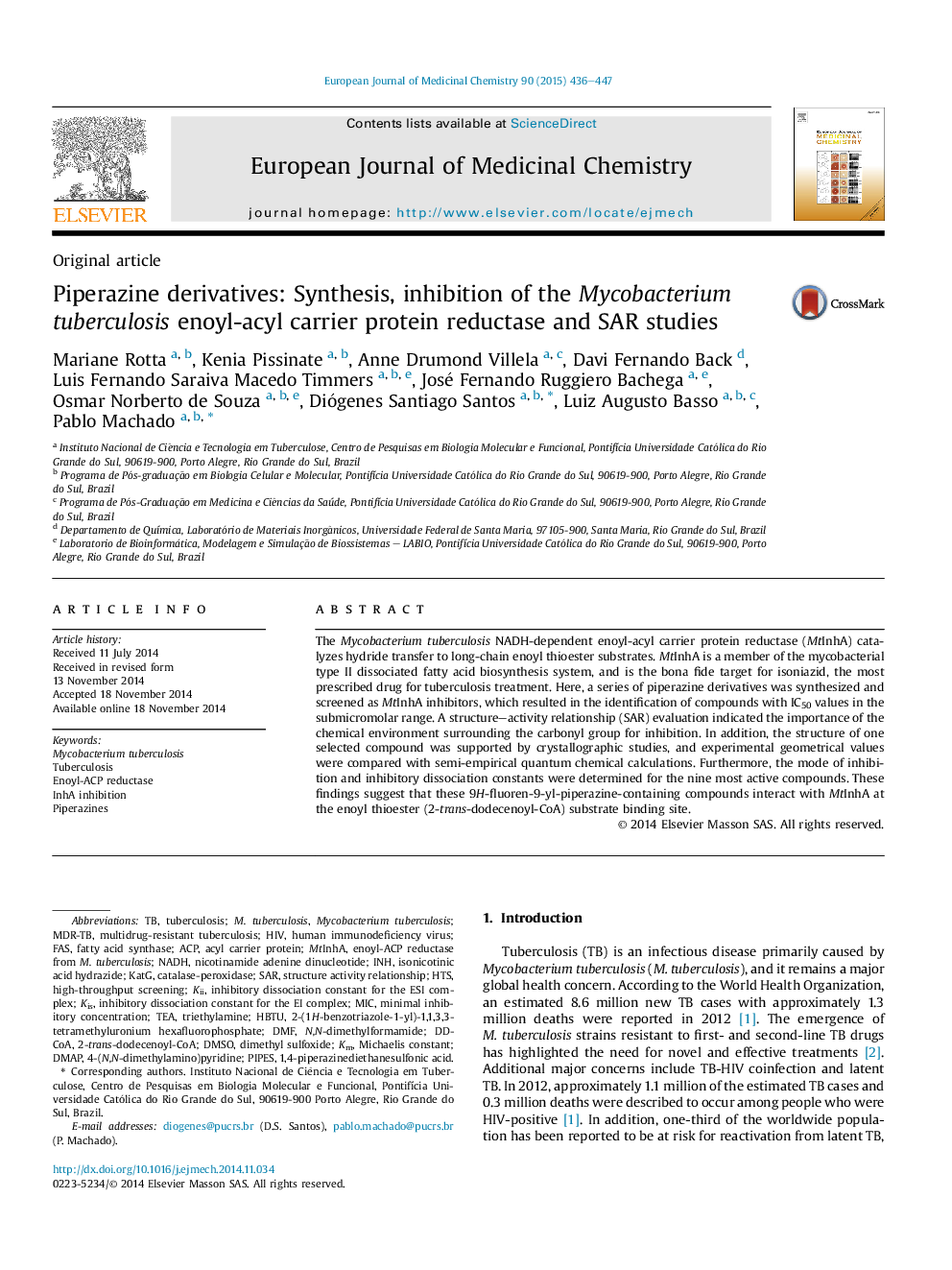| Article ID | Journal | Published Year | Pages | File Type |
|---|---|---|---|---|
| 1395501 | European Journal of Medicinal Chemistry | 2015 | 12 Pages |
•Synthesis and structural characterization of piperazine derivatives.•Identification of MtInhA inhibitors with IC50 values and inhibition constants in the submicromolar range.•Electronic and structural characterization of the pharmacophore carbonyl group environment of the compounds.•In vitro kinetic assays to characterize the binding mode of the inhibitors.•MIC determination to evaluate the inhibitory capacity of select compounds.
The Mycobacterium tuberculosis NADH-dependent enoyl-acyl carrier protein reductase (MtInhA) catalyzes hydride transfer to long-chain enoyl thioester substrates. MtInhA is a member of the mycobacterial type II dissociated fatty acid biosynthesis system, and is the bona fide target for isoniazid, the most prescribed drug for tuberculosis treatment. Here, a series of piperazine derivatives was synthesized and screened as MtInhA inhibitors, which resulted in the identification of compounds with IC50 values in the submicromolar range. A structure–activity relationship (SAR) evaluation indicated the importance of the chemical environment surrounding the carbonyl group for inhibition. In addition, the structure of one selected compound was supported by crystallographic studies, and experimental geometrical values were compared with semi-empirical quantum chemical calculations. Furthermore, the mode of inhibition and inhibitory dissociation constants were determined for the nine most active compounds. These findings suggest that these 9H-fluoren-9-yl-piperazine-containing compounds interact with MtInhA at the enoyl thioester (2-trans-dodecenoyl-CoA) substrate binding site.
Graphical abstractFigure optionsDownload full-size imageDownload as PowerPoint slide
